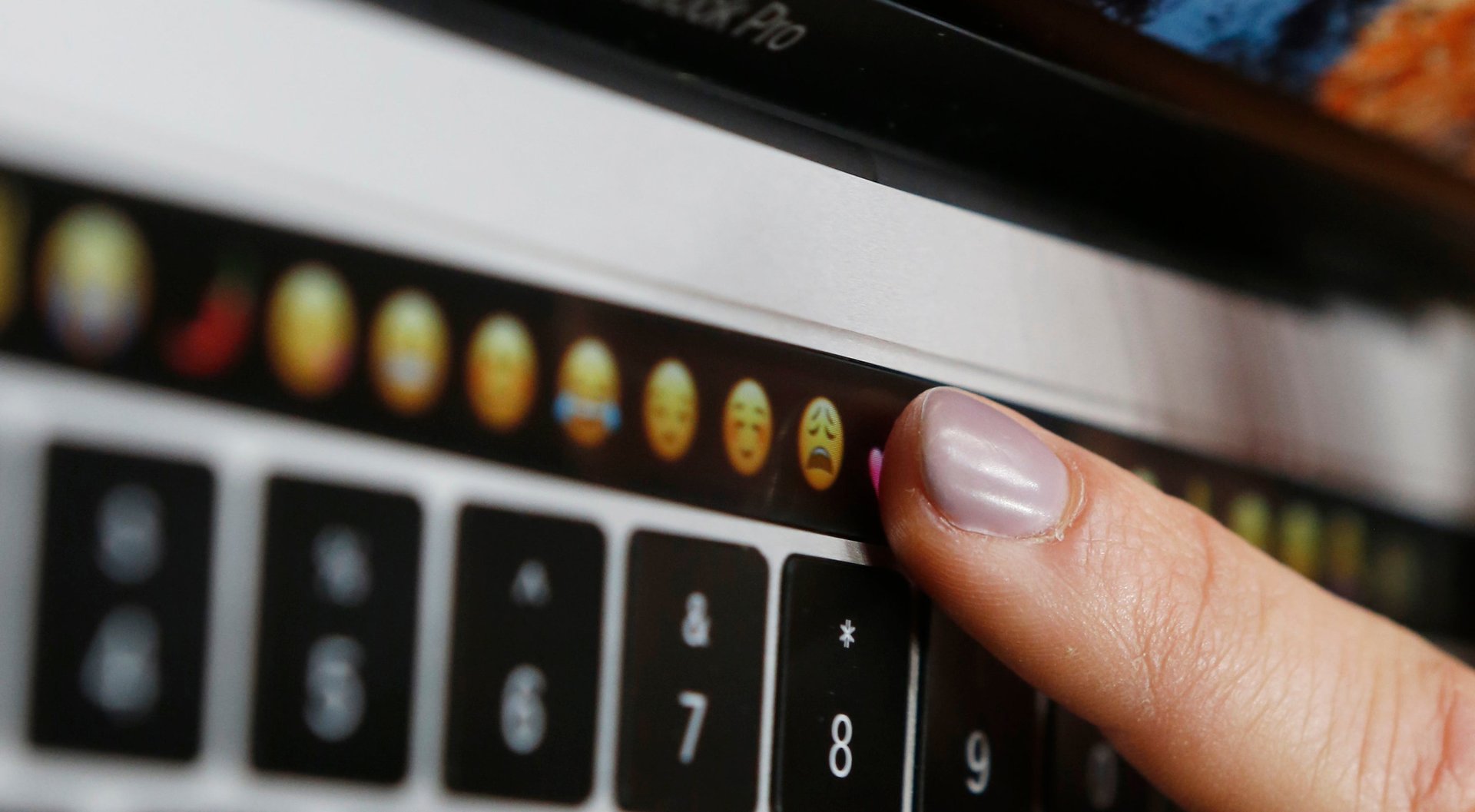Why women overload texts with emojis, as explained by one hilarious video
When Rebecca Blaine Carton worked in an all-women office, she came to realize how necessary emojis and friendly punctuation have become for basic communication. Notes about meeting times or office supplies were always cluttered with multiple exclamation points, symbols, or smiley faces. And if you didn’t conform to this code of perkiness, “a coworker would think you were annoyed with them,” says Carton. “God forbid you just end your sentence with a period.”


When Rebecca Blaine Carton worked in an all-women office, she came to realize how necessary emojis and friendly punctuation have become for basic communication. Notes about meeting times or office supplies were always cluttered with multiple exclamation points, symbols, or smiley faces. And if you didn’t conform to this code of perkiness, “a coworker would think you were annoyed with them,” says Carton. “God forbid you just end your sentence with a period.”
The experience inspired Carton and her collaborator, Kira McCarthy, to make this short video, part of ”Living Thru The Lens“ sketch series, exploring the present and future impact of technology and social media.
The sketch presents an all-too-familiar situation: You’re watching TV, then remember with a sinking feeling that you have social plans. Instead of ditching them as you wish you could, you and your friend exchange enthusiastic texts: “we still on for tonight? 🤗❤️” and “of course, can’t wait!! 👠🍸.”
The emoji-laden texts go back and forth until one party breaks the code with an unpunctuated “alright,” or worse, “k.” Immediately the other is flooded with self-doubt: Is she mad? Is he stuck on that fight we had last week? Are we even friends?
This lampooning of the unspoken requirement that we adorn digital communication with cutesy emojis will be familiar to many, especially millennial women. Women are conditioned to nod and smile to ensure those we’re speaking with feel confident and comfortable. And we’re labeled ”bitchy” or “cold” when we speak in assertive, unadorned language—a trait praised in men.
There’s a similar dynamic at play in text communication, writes Jenny Davis, a social psychologist, professor at The Australian National University, and editor of Cyborgology. “Emoji and exclamation points are the textual versions of body language… The nods, smiles, and tacked-on giggles that women have long-employed in face-to-face conversation,” she says. “In this way, the period is a stern look with crossed arms.”
Traditionally, women’s speech styles tend to be about “about making space for others’ expressions,” says Davis, so “the love hearts and winky face emojis are [also] forms of deference and affection that show care for those with whom a person communicates.”
This isn’t to say that using emojis is inherently bad or anti-feminist. Emojis, Davis points out, “can also be used ironically, intentionally, and proudly.” Some women use emojis to re-appropriate traditionally feminine stereotypes—and sometimes emojis just make us happy.
Ultimately, this video shows the importance of being just as intentional when communicating digitally as face-to-face. If you balk at being expected to smile on demand, it’s worth questioning that knee-jerk 😊 pinned to the end of every text.
So next time your roommate asks you to grab toilet paper, it’s okay to text back “sure, no problem”—without the 💜. (💩, however, is still fair game.)